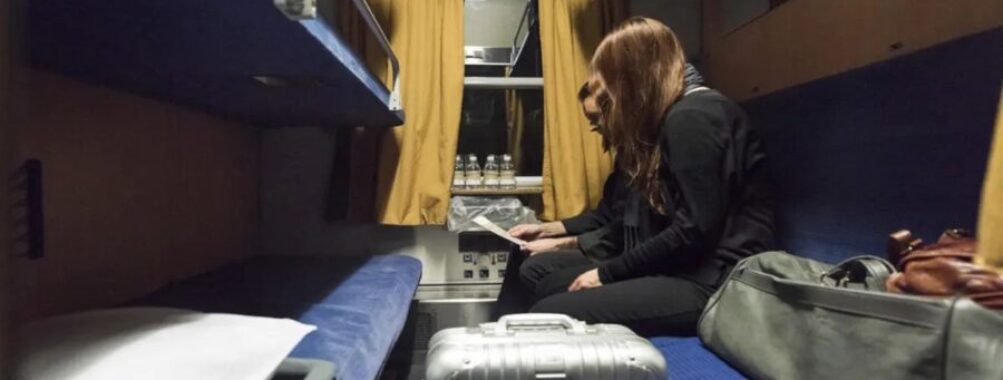
European Night Train Luggage Rules: Essential Guide for Stress-Free Travel
Ever tried to wrangle a giant suitcase into one of those narrow night train cabins? It’s not exactly a moment of elegance.
Space is tight, and, honestly, the luggage rules seem to change every time you cross a border. Most European night trains let you bring one suitcase and a small bag, but you’re the one who has to lug and stash them in limited onboard space.
You’ve got to think ahead—maybe fold your bag down to squeeze it under a berth or hoist it onto those overhead racks that always seem juuust out of reach. Some trains have big racks near the doors, but others? You’ll be out of luck. And don’t get me started on the wild rules for strollers, bikes, or random bulky gear—knowing what’s allowed before you board can save your sanity.
Once you figure out the system, traveling overnight with your bags gets easier. It’s kind of like a puzzle you solve before you drift off somewhere between cities.
Key Takeaways
- Night trains usually limit you to one suitcase and a small bag
- Storage is tight, so bring compact, easy-to-carry bags
- Each route has its own rules—check before you go
Table of Contents
- Key Luggage Rules for European Night Trains
- General Luggage Limits and Allowances
- Self-Carry and Handling Requirements
- Differences from Day Trains
- Types and Sizes of Luggage Allowed
- Bags, Suitcases, and Small Suitcases
- Oversized Items and Special Equipment
- Prohibited and Restricted Items
- Luggage Storage Options Onboard
- Luggage Racks and Luggage Storage Spaces
- Under-Seat and Compartment Storage
- Handling Prams, Pushchairs, and Folding Bicycles
- Special Rules for Popular Night Train Routes
- London St Pancras to Brussels
- Eurostar and SNCF Night Trains
- Other Major European Routes
- Packing Tips for Hassle-Free Night Train Travel
- Efficient Packing with Packing Cubes
- Choosing the Right Luggage
- Traveling Light and Smart
- Fees, Tickets, and Excess Luggage Policies
- Baggage Fees and Luggage Limits
- Bicycle Tickets and Special Items
- Policies for Excess and Unusual Luggage
- Frequently Asked Questions
- What are the size and weight limits for luggage on European night trains?
- How does luggage storage work on overnight trains in Europe?
- Are there any additional fees for bringing extra luggage on European night trains?
- Can I keep my luggage with me in my sleeping compartment on a night train?
- What should I consider when packing for a European train journey to ensure my luggage meets the regulations?
- Is there a difference in luggage policy between private and state-operated night trains in Europe?
- Book Your Dream Experience
- More Travel Guides
Key Luggage Rules for European Night Trains
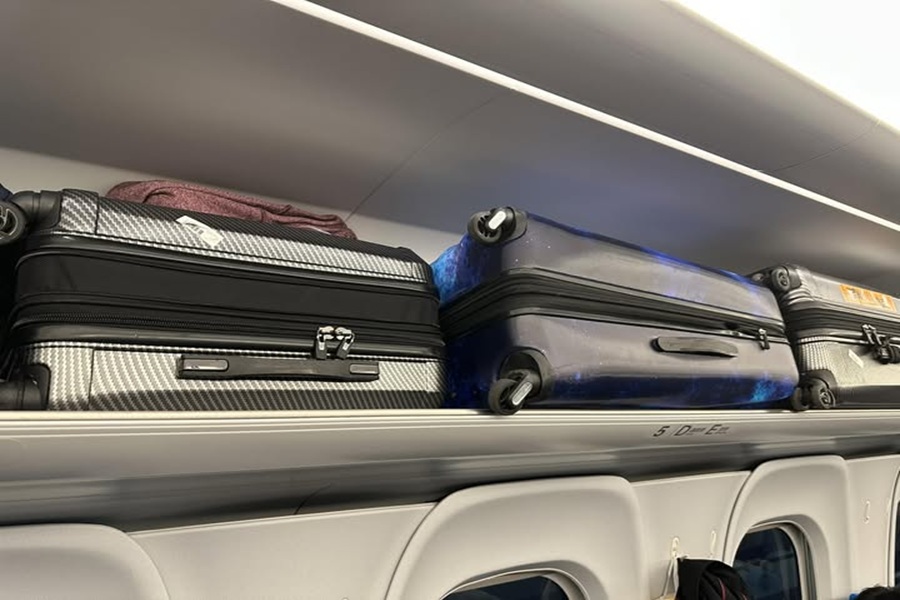
European night trains give you more freedom with luggage than airlines, but there are a few practical rules that can shape your trip. Space is tighter than you’d expect, and you’ll be schlepping your bags from platform to compartment—no porters here.
General Luggage Limits and Allowances
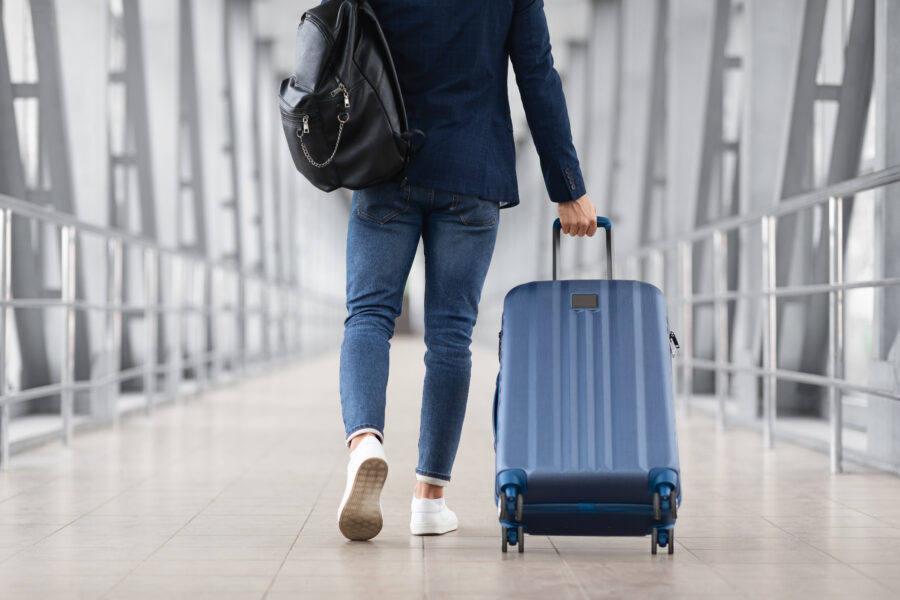
Most European night trains don’t care about strict weight or size limits like airlines do. The golden rule? Only bring what you can carry in one go. No porters, no check-in counters, and no oversized shipping crates.
Storage space changes depending on the train. Sleeper cabins might give you a tiny rack above the door or a little nook under the lower bunk. In couchettes or basic seat cars, you’ll usually find luggage racks at the ends of the carriage.
It’s smart to split your stuff into:
- Main bag or suitcase – for things you won’t need until you arrive
- Small daypack – for what you’ll want during the ride
- Personal valuables bag – always with you
If you’re hauling sports gear or a musical instrument, check ahead. Some operators want them in special cases that fit standard racks.
Self-Carry and Handling Requirements
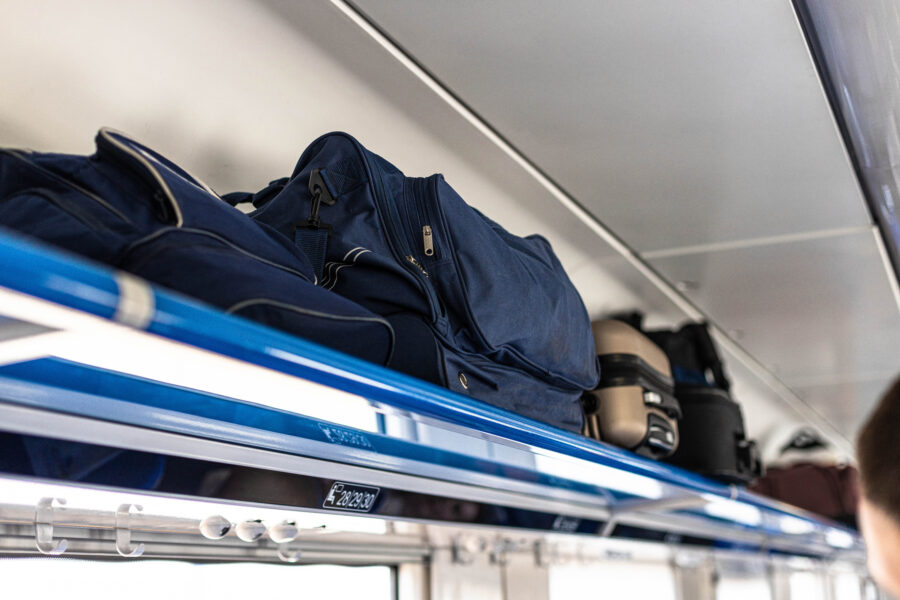
You’re the porter on a European night train. You’ll need to lift your bag onto the train, navigate narrow corridors, and stash it somewhere that doesn’t block walkways or exits. Train staff might step in for safety issues, but they won’t carry your bags for you.
On busy routes, storage fills up fast. Arrive late, and you might end up wedging your suitcase behind a folding seat or some other awkward spot. I’ve done it—more than once.
Keep passageways clear. It’s not just about being polite; it’s a safety thing. Secure your luggage, too. A sudden brake can send a loose bag flying, and trust me, nobody wants a suitcase in their bunk at 3 a.m.
Differences from Day Trains
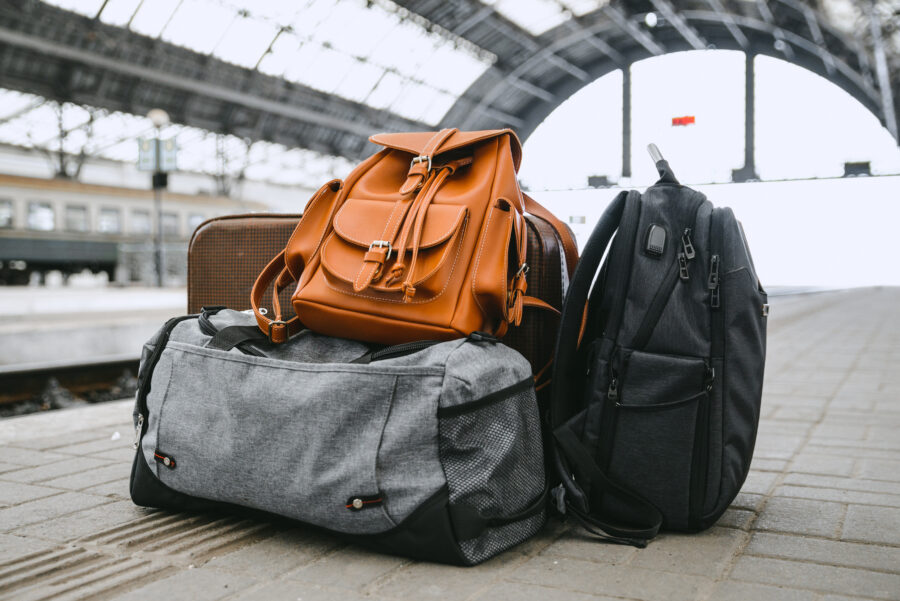
Day trains in Europe usually offer more open storage and bigger racks, especially on those speedy services. Night trains? They prioritize sleeping space, so your cabin feels cramped if you bring more than one big suitcase.
You’ll spend the night with your luggage right there—either in your compartment or just outside the door. On a day train, you might stash your bag far away and just keep an eye on it now and then.
The boarding process is different, too. Day trains have quick stops, easy access to luggage racks. Night trains sometimes mean boarding in dim light, shuffling up narrow steps, and squeezing into a compartment that’s already half full. Pack so you can move fast and quietly when you get on board.
Types and Sizes of Luggage Allowed

Most European night trains let you bring a fair amount of luggage, but there are still size limits, storage quirks, and a few unwritten rules. Pack what you can carry and stash yourself, and don’t block the aisles or hog all the space.
Bags, Suitcases, and Small Suitcases
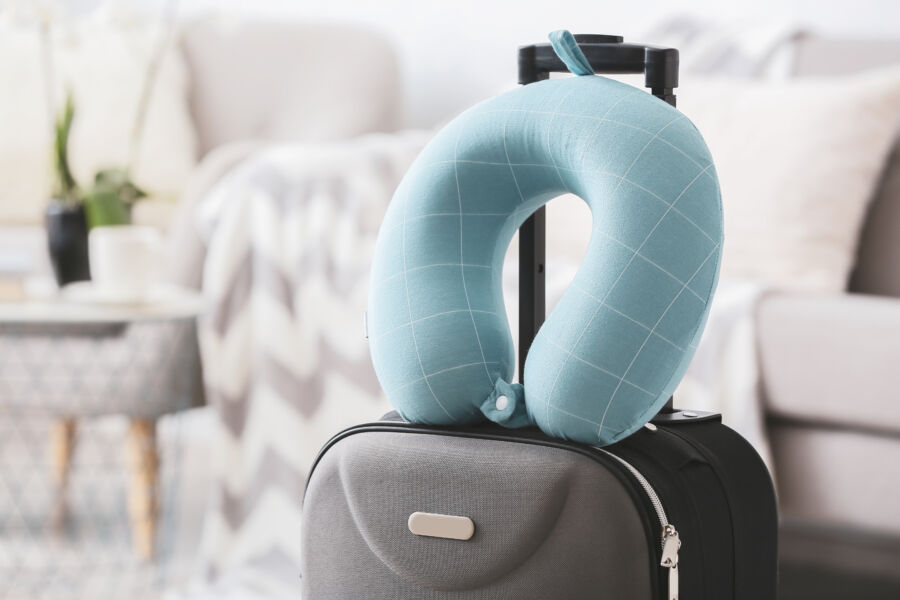
On most routes, you can bring one medium suitcase or backpack, plus a smaller bag or daypack—no extra charge. A typical carry-on size (about 55 x 35 x 25 cm) fits nicely in overhead racks or under bunks.
If you’ve got a small suitcase, it’s usually easier to slide it under your seat or tuck it in a corner. I’ve learned that soft-sided bags are way more forgiving when you’re trying to jam them into an odd-shaped rack.
Nobody’s weighing or measuring bags, but don’t push your luck with three giant roller cases. Your cabin mates won’t thank you, and you’ll regret it when you have to haul them up narrow train steps.
Oversized Items and Special Equipment
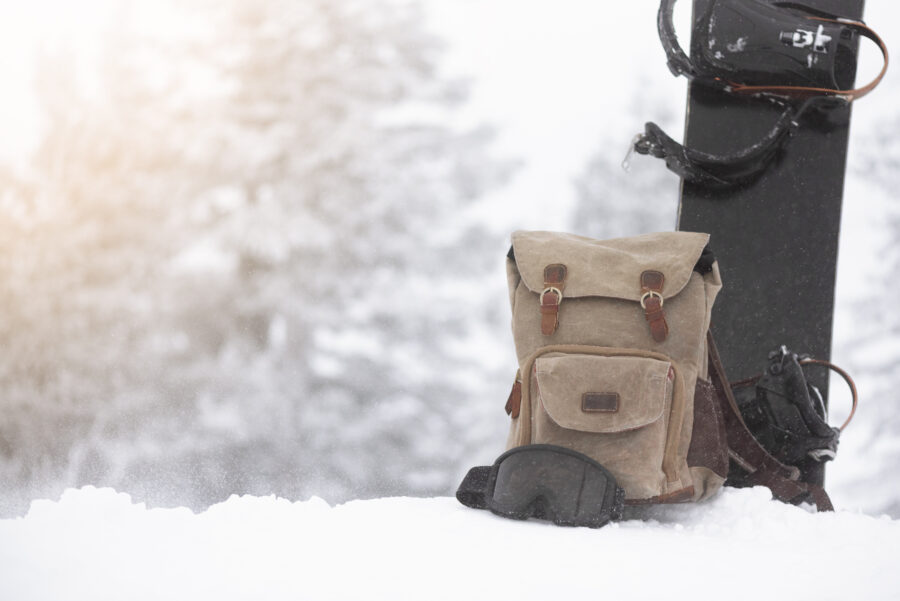
You can bring bigger stuff like folding bikes, skis, or snowboards if they’re packed and about the size of a standard suitcase. Got a folding bike in a bag? You’re golden.
Loose skis rattling down the aisle? That’s a hard no. Some trains accept full-size bikes with a reservation, but space is super limited—book early.
I once tried to wing it with a bike and ended up leaving it in a station locker overnight. Never again.
If your luggage is bigger than the informal limit, you might get charged an excess luggage fee (usually around €6–€10), but more often, staff just tell you to move or rearrange it. Oversized gear should never block doors or emergency exits.
Prohibited and Restricted Items
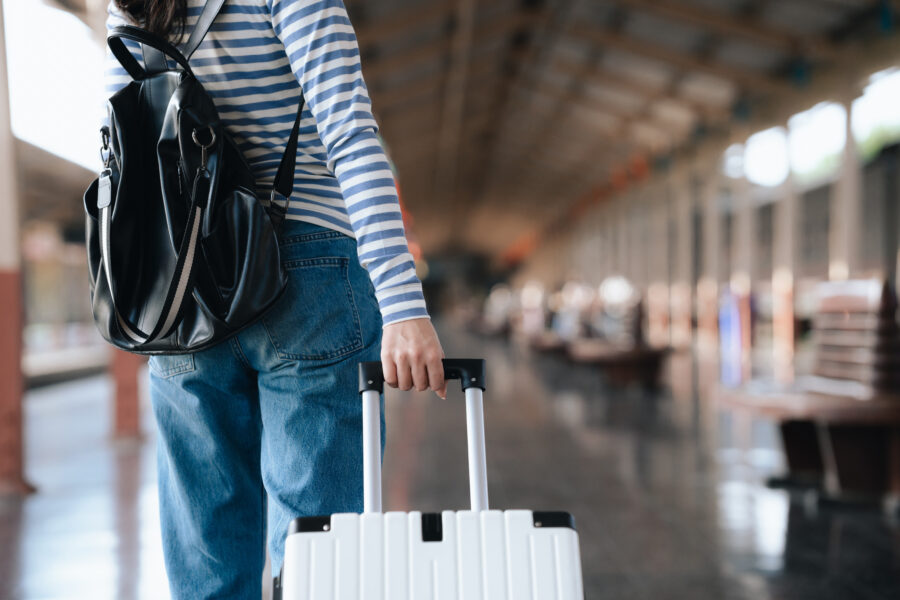
Night trains stick to the usual public transport rules for banned items. No fuel canisters, explosives, or anything that could be a weapon. Even camping stoves with gas attached usually aren’t allowed.
Food and drink? Fine—I always bring snacks—but anything with a strong smell can make you unpopular in a shared compartment.
Some routes restrict how much alcohol or tobacco you can bring across borders. And pets aren’t “luggage,” but rules vary—a lot of night trains want you to book a private compartment if you’ve got a dog or cat. Always double-check before you show up at the platform.
Luggage Storage Options Onboard

You’ll keep your bags with you on most European night trains—no checking them in. Space is tight, so knowing where to stash your stuff ahead of time can make the trip a lot less stressful.
Luggage Racks and Luggage Storage Spaces

Look for overhead luggage racks above the seats in couchette and seated compartments. They’re great for smaller suitcases, backpacks, and duffels you can lift without help. If you can’t get it up there, it’s too big for the rack.
At the ends of some carriages, you’ll spot floor-standing luggage stacks. These are for bigger suitcases or bulkier items. On night trains, they’re usually near the door or in the shared spaces between compartments.
I always keep my bag in sight if I can. If you use a rack at the far end, slap a strap or tag on it. Not because I’m paranoid—it just makes it easier to spot your bag when you’re scrambling to get off at your stop.
Under-Seat and Compartment Storage
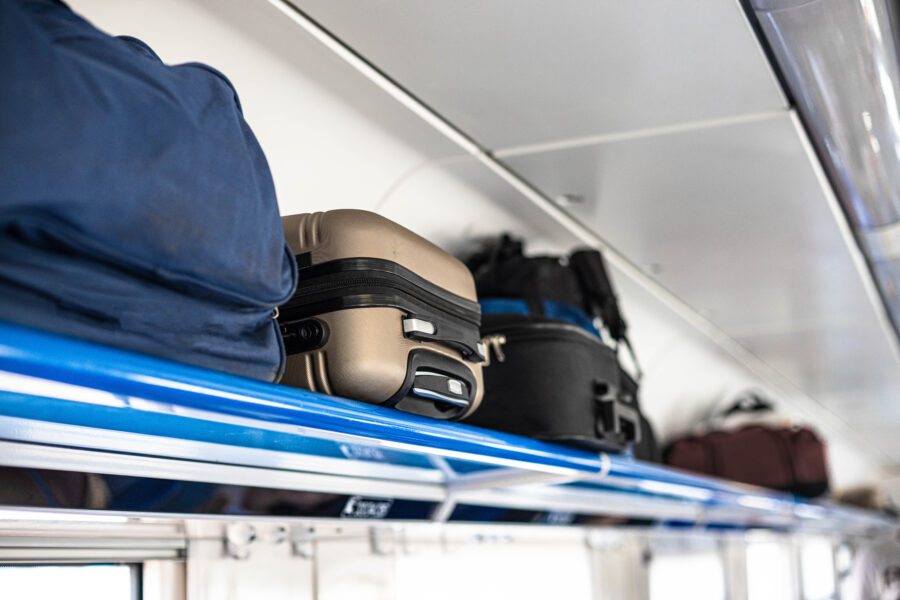
In a lot of sleeper compartments, you’ll find space under the lower bunks for medium-sized bags. That’s a lifesaver for heavier luggage since you don’t have to lift it high. Just don’t block the ladder or walkway.
Compartments with fewer people sometimes have extra corner shelves or little cubbies. Perfect for daypacks, shoes, or whatever you want handy during the night.
If you’re in a seat car overnight, the space under your seat fits a small case or soft bag. I’ve even shoved a slim backpack between my feet when the gap was tiny. Not glamorous, but hey, at least your essentials are close.
Handling Prams, Pushchairs, and Folding Bicycles
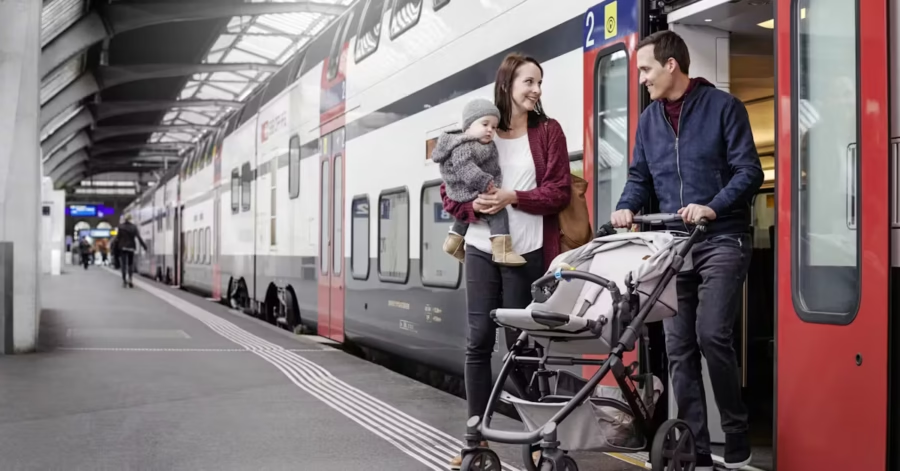
Night trains allow prams and pushchairs, but you have to fold them before boarding. They usually fit in the luggage stacks at the carriage ends, though some parents squeeze them into their compartment if there’s room.
Folding bicycles are fine on many routes if they’re packed in a bike bag. Once folded, they go in the same racks as regular luggage. Just check the size rules—budget operators can be stricter.
I once shared a couchette with a cyclist who tucked his folded bike under the lower bunk, no problem. The trick? Make sure it’s clean and not blocking anyone’s path, especially during those late-night bathroom runs.
Special Rules for Popular Night Train Routes

Some night train routes in Europe have their quirks when it comes to luggage. The rules can shift depending on the operator, the country, and even your ticket type. Knowing this ahead of time can save you a headache at the station.
London St Pancras to Brussels
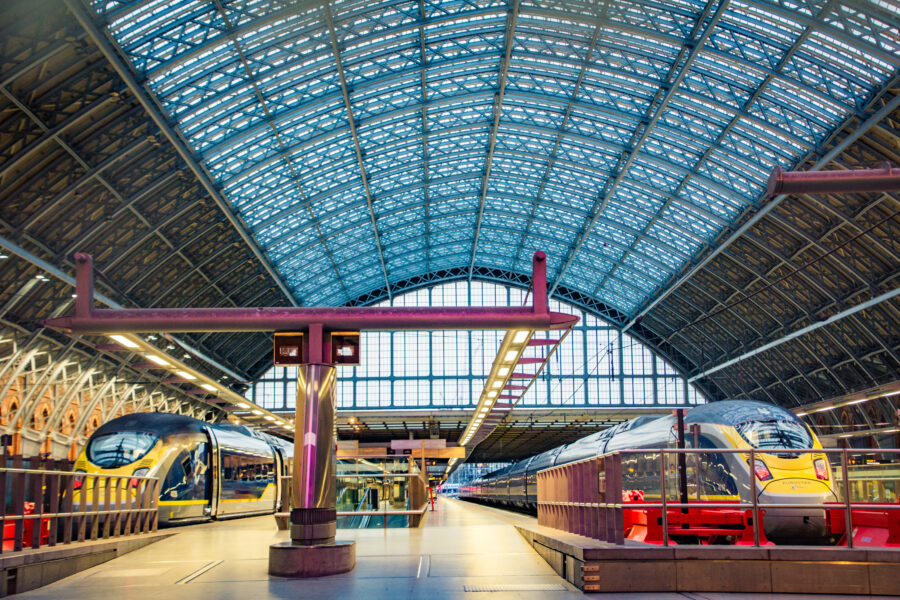
If you’re taking the Eurostar from London St Pancras to Brussels, expect the luggage rules to feel more like an airline than a typical European train. Security checks and X-ray screening are part of the deal, so don’t count on rolling up with an oversized bag and sneaking by.
You can usually bring two large items (up to about 85cm each) plus one small bag. No weight limit, but you’ve got to carry it all yourself. Bulky stuff like skis or instruments? Book them in advance. Bikes must be boxed or bagged.
One thing I’ve learned—arrive early. Security lines can get wild, especially on Friday nights. If you’re late, your bags won’t get you on board any faster.
Eurostar and SNCF Night Trains

Eurostar’s high-speed trains are one thing, but SNCF’s Intercités de Nuit (France’s night trains) are way more chill about luggage. You can usually bring two or more big bags, and nobody’s measuring. The catch? Storage in couchettes is tight, so soft-sided bags that squish into weird spaces are your friend.
If you’re connecting from Eurostar in Paris to an SNCF night train, remember you’re switching between two different luggage systems. France is relaxed, but the London-bound Eurostar will still check your bags strictly.
I always keep a small rucksack with my overnight essentials—pyjamas, toothbrush, a snack—because once your big bag is wedged in the rack, you won’t want to dig it out mid-journey.
Other Major European Routes
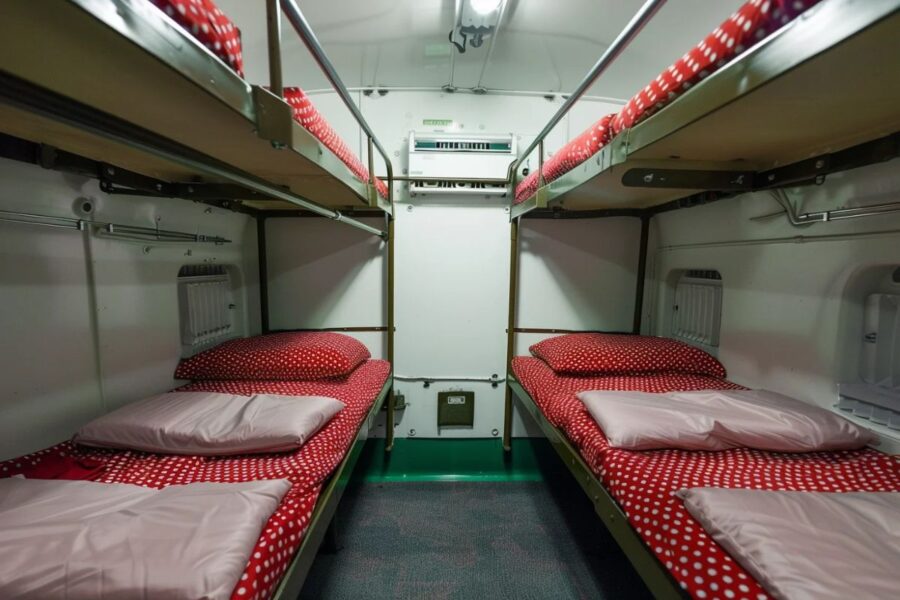
Routes like Vienna to Zurich on the ÖBB Nightjet, or Berlin to Rome by sleeper, usually stick to the “carry what you can manage” rule. There’s rarely a set size or weight limit, but space is still limited, especially if you’re sharing.
On Nightjet trains, you’ll find storage overhead, under bunks, or in little racks by the door. If you’ve got skis, a guitar, or something awkward, pack it so it fits in standard spaces—staff will ask you to move anything blocking aisles or exits.
One tip I swear by: split your luggage into a main bag and a smaller one to keep with you. That way, you’re not climbing over sleeping strangers at 2 a.m. just to charge your phone.
Packing Tips for Hassle-Free Night Train Travel
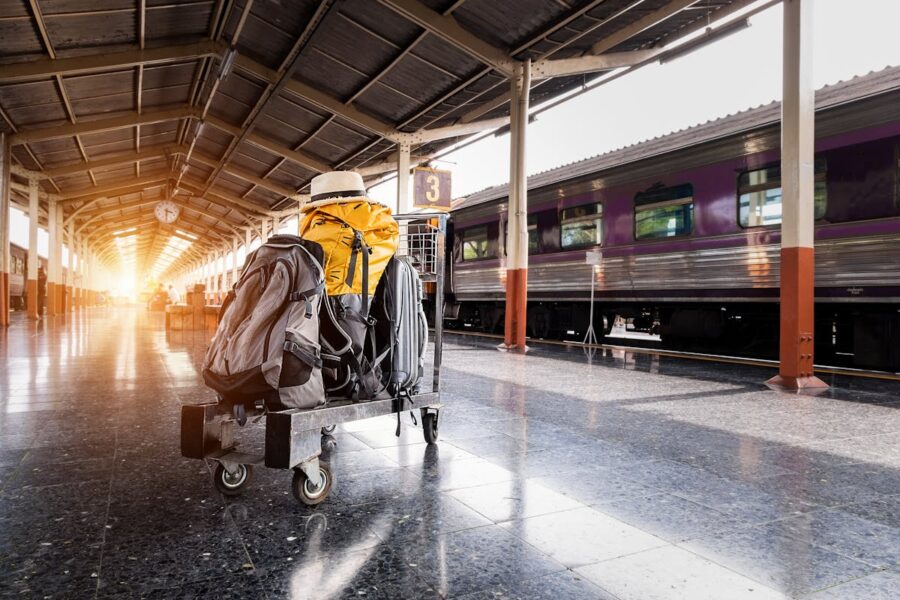
Night trains let you dodge airport chaos and wake up somewhere new. But space is tight, and you’ll want your stuff easy to find—nobody wants to rummage through their bag in the dark while their bunkmate’s asleep. A little planning goes a long way.
Efficient Packing with Packing Cubes
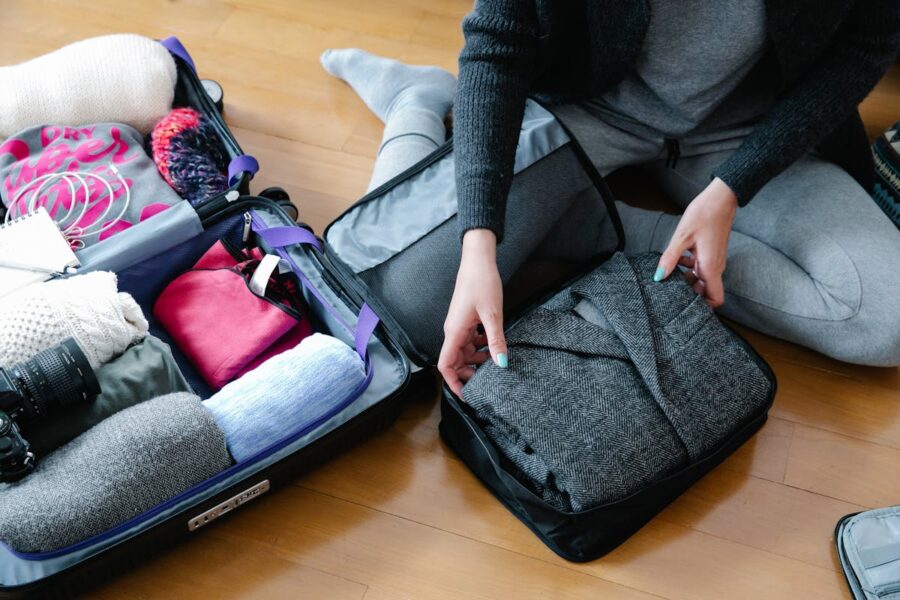
Packing cubes aren’t just for the obsessively organized—they’re honestly lifesavers on night trains. I’m always grateful for how they keep my clothes and tiny odds and ends grouped, especially when I’m fumbling around in a cramped berth late at night.
I’ll use one cube just for sleepwear and toiletries, so when it’s time to get ready for bed, I can grab what I need in a second. No more frantic digging through my whole bag.
Pick cubes in different colors or sizes. That way, you know what’s inside without opening each one—so much easier when you’re half-asleep or in a hurry.
If I’m traveling more than a couple of days, I dedicate a cube to “next day” outfits. It’s a tiny hack, but trust me, it makes those groggy early train arrivals way less painful.
Choosing the Right Luggage

European night train cabins and overhead racks just don’t play nice with giant hard-shell suitcases. I always reach for a soft-sided bag or a medium backpack—they fit into weird corners and you can squish them down when space is tight.
A 40–50L backpack hits the sweet spot for me. It’s roomy enough for my stuff, but not so big that I’m knocking people over in the station. Prefer wheels? Grab a compact soft roller that’ll slide under your bunk.
Don’t skip a small day bag for the essentials—valuables, snacks, your passport. Keep it close while you sleep. If you’re gear shopping, poking around travel gear options is honestly pretty fun, and you might find something that works for both trains and city wandering.
Traveling Light and Smart
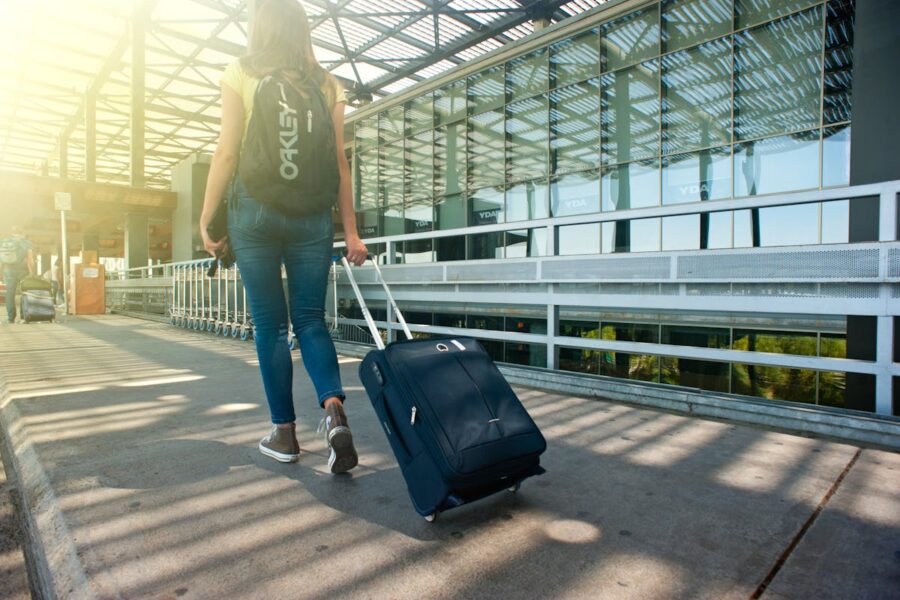
Bring less, worry less. Night train compartments fill up fast, especially if you’re sharing with strangers.
Pack clothes that mix and match, and stick to light layers. You never really know if your car will be toasty or freezing.
Limit yourself to two pairs of shoes—one comfy for walking and something lighter for evenings. Toiletries? Go travel-sized. You can always top up at your next stop.
Every extra thing you pack is another thing to lift, stash, and keep safe. Traveling light isn’t just about space—it’s about not stressing every time you move.
Fees, Tickets, and Excess Luggage Policies
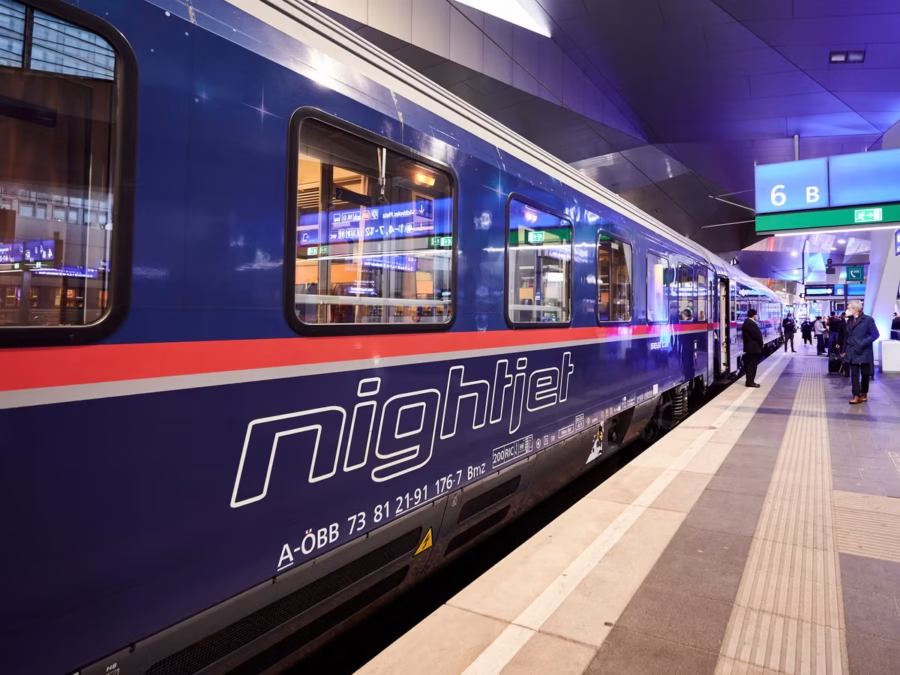
Night trains in Europe are usually pretty chill about luggage, but the small print can trip you up if you’re not paying attention. Some operators include generous allowances, while others sneak in charges for oversize bags, bikes, or extra stuff.
Baggage Fees and Luggage Limits
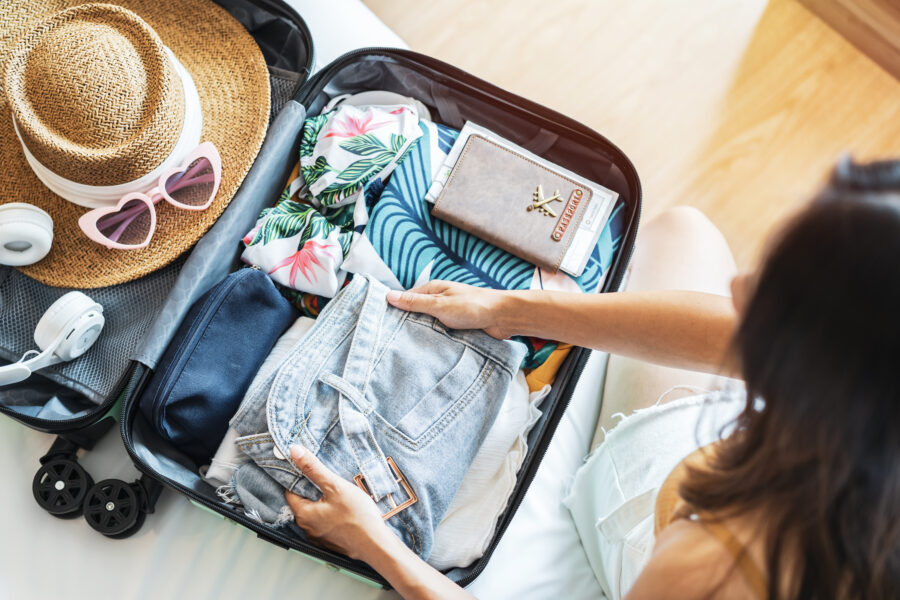
Most night trains let you bring two large bags and one smaller item for free. “Large” usually means about 85 cm long or a combined size around 250 cm, and up to 25–30 kg per bag.
Traveling on Eurostar or Thalys? Their rules are stricter. If your bag looks oversized, they’ll measure or weigh it and maybe hit you with a fee—anywhere from €5 to €30, depending on the route.
Budget operators like Ouigo in France keep tickets cheap by limiting what you can bring. They’ll let you have smaller bags for free, but charge for anything bigger. I once had to shell out an extra €10 for a roller case that wouldn’t fit under the seat—not a disaster, but not fun at midnight when you just want to crash.
Bicycle Tickets and Special Items
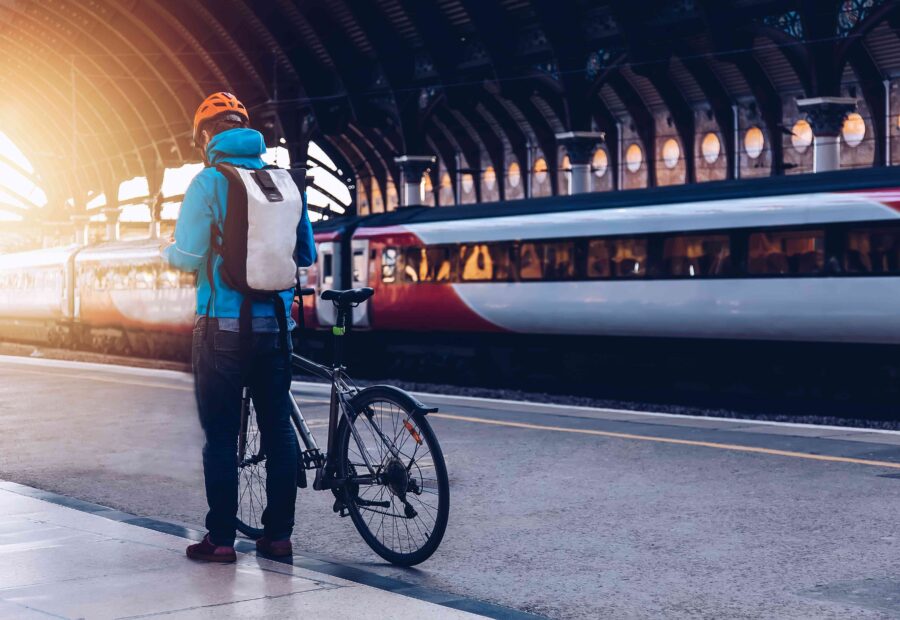
Bikes are a whole different headache. Most night trains won’t let you roll them on as-is. You’ll need to fold or pack them in a bag, usually under 120 x 90 cm.
Want to bring a regular bike? You’ll almost always need a separate bicycle ticket. Prices jump around—I’ve paid €9 in Germany and €15 in Italy. Some routes only have a few bike spaces, so book early if you can.
Other gear, like skis or surfboards, might need a separate ticket or reservation, too. If you’re heading for the slopes, check if your train has a sports equipment allowance. Otherwise, you might have to treat them as oversized luggage and pay up.
Policies for Excess and Unusual Luggage
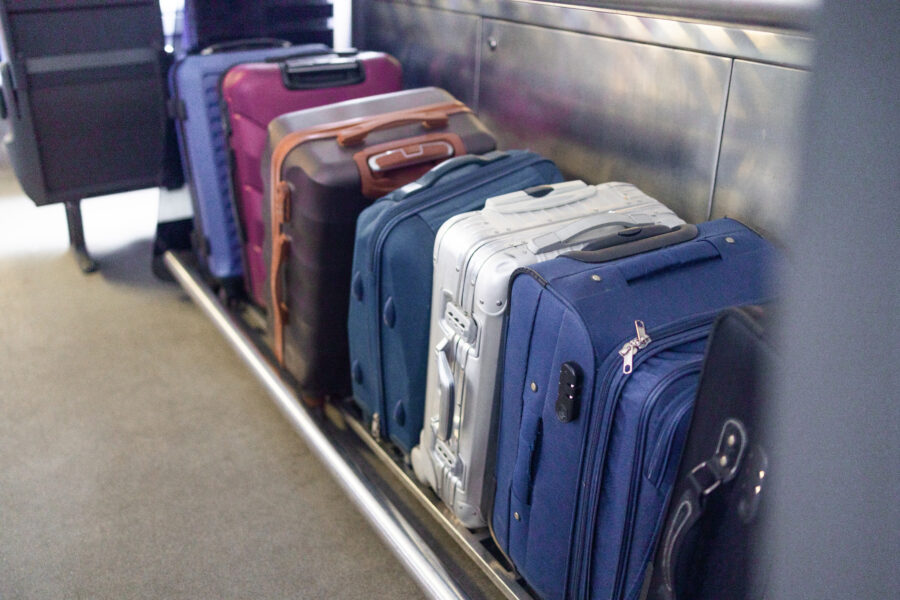
If your bag is too big, too heavy, or you just have too many, you’ll probably pay an excess luggage fee. On Polish night trains, I once paid about 5 PLN (barely over €1) for a big backpack that wouldn’t fit overhead—cheap, but I still had to get a slip of paper stapled to my ticket.
Sometimes, operators make you check extra bags into a registered luggage service before you board. That means dropping it off at a counter and picking it up at your destination—not ideal if you need something during the ride.
Unusual items, like musical instruments or bulky camping gear, can be tricky. If you can squeeze them into the luggage racks, you’re fine. If not, you might have to pay extra or even book a separate compartment. I’d always shoot the train company an email before risking it at the station.
Frequently Asked Questions

Night trains in Europe are usually way more relaxed about luggage than airlines, but there are still some rules and practical tips you should know. You’ll carry your bags on board, stash them yourself, and want to keep valuables close.
What are the size and weight limits for luggage on European night trains?
Most night trains won’t hassle you about size or weight as long as you can carry your bag. Some operators, like Eurostar or certain budget lines, do have maximum dimensions—usually around 85 cm for the longest side—but honestly, they rarely check unless your bag is massive.
How does luggage storage work on overnight trains in Europe?
You’ll spot overhead racks for small bags and floor-level racks near the doors for bigger suitcases. In sleeper or couchette cars, you usually get space under the bunks or in a little corner of the compartment. I’ve even stashed my backpack behind the ladder in a 6-berth couchette—worked just fine.
Are there any additional fees for bringing extra luggage on European night trains?
Most classic night trains let you bring a reasonable amount of luggage for free. Extra fees usually only show up on budget services or if you use a registered baggage service, which is honestly rare for overnight routes.
Can I keep my luggage with me in my sleeping compartment on a night train?
Absolutely, and most travelers do. In private compartments, your bags stay right there with you. In shared couchettes, you’ll store them under bunks or on racks in the compartment, so they’re still within reach.
What should I consider when packing for a European train journey to ensure my luggage meets the regulations?
Pack light enough to lift your bag onto a rack by yourself—trust me, trying to wrestle a heavy suitcase in a narrow aisle at midnight is no one’s idea of fun. Keep your valuables, documents, and electronics in a small daypack you can always grab if you leave your seat or berth.
Is there a difference in luggage policy between private and state-operated night trains in Europe?
Let’s talk luggage, because—let’s be honest—nobody wants a surprise at the station. Private night train operators often spell out their bag limits more clearly, especially if you’re booking one of those shiny new “premium” services.
On the flip side, state-run trains usually play it by ear. They’re a bit more relaxed, at least in my experience. Either way, you’ll need to handle your bags—don’t expect staff to help lug your suitcase down the corridor.



